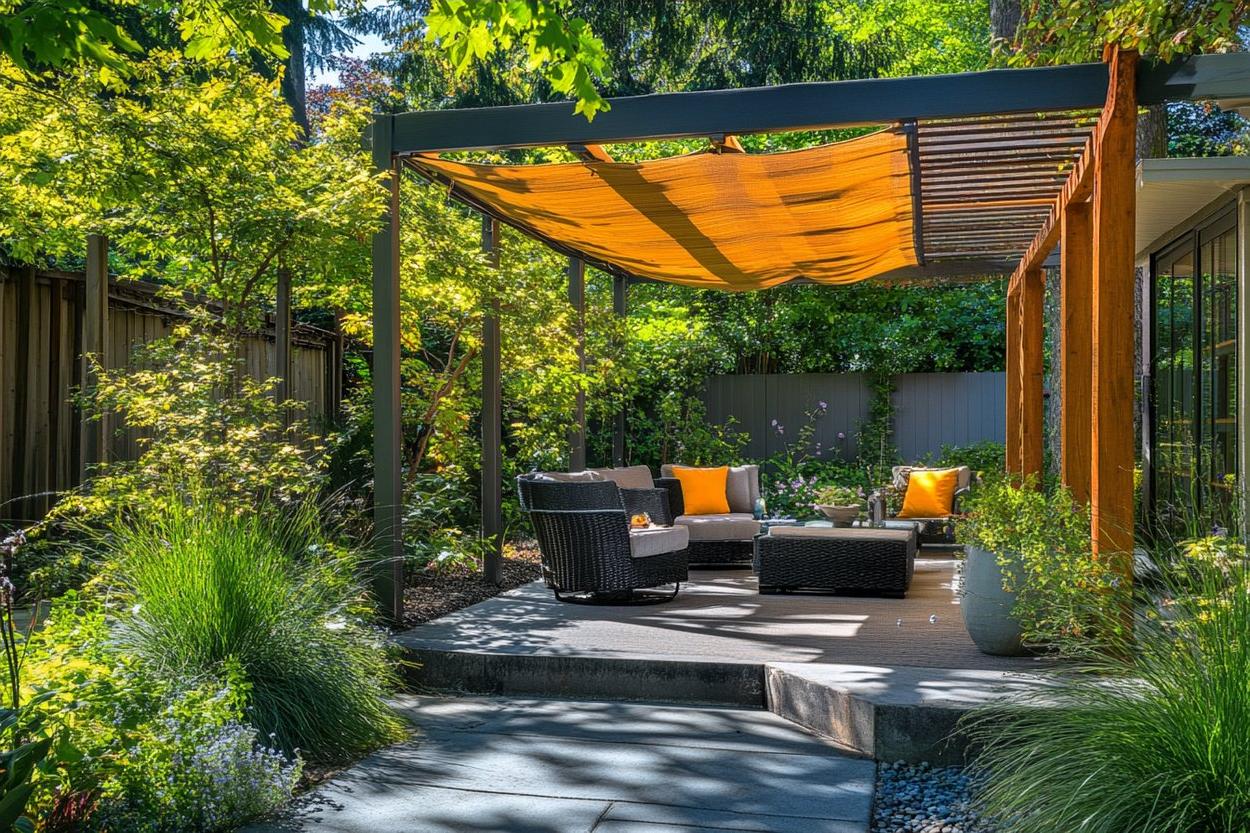Move-In Ready Container Homes: The Future of Affordable and Sustainable Living in 2025
In recent years, container homes have surged in popularity as a sustainable, affordable, and stylish alternative to traditional housing. By 2025, this trend has not only solidified but evolved into an essential part of the housing market. With developments in design and technology, move-in ready container homes, particularly 2-bedroom models, have become a hot commodity for people seeking modern, efficient living spaces. This article explores the evolution of these homes, their benefits, and the innovative designs that are captivating the housing industry.

The housing market has experienced unprecedented challenges in recent years, pushing many Americans to explore alternative living solutions. Container homes have emerged as a viable option, transforming industrial shipping containers into comfortable, modern residences. These structures offer reduced construction timelines, lower environmental impact, and significant cost savings compared to traditional housing. Understanding the fundamentals, benefits, and practical considerations of container homes helps potential homeowners make informed decisions about this innovative housing approach.
Revolutionizing Housing with Containers
Shipping container architecture represents a fundamental shift in residential construction. Standard containers measure 20 or 40 feet in length, providing modular building blocks that can be stacked, combined, or modified to create diverse floor plans. The structural integrity of these steel boxes allows for creative designs while maintaining safety standards. Architects and builders have developed sophisticated techniques to insulate, weatherproof, and finish container interiors to match or exceed conventional home comfort levels. The construction process typically involves cutting openings for windows and doors, adding insulation, installing electrical and plumbing systems, and applying interior finishes. Many companies now offer pre-fabricated designs that arrive partially or fully completed, significantly reducing on-site construction time. The modular nature of containers enables homeowners to start with a basic structure and expand as needs or budgets allow.
Affordable and Eco-Friendly Living
Container homes address two critical concerns facing modern homeowners: affordability and environmental responsibility. By repurposing containers that would otherwise sit unused or be scrapped, these homes reduce material waste and the carbon footprint associated with manufacturing traditional building materials. A single 40-foot container can provide approximately 320 square feet of living space, and most homes use between one and eight containers depending on desired size. The steel construction offers durability against weather, pests, and fire, potentially reducing long-term maintenance costs. Energy efficiency can be optimized through proper insulation, strategic window placement, and integration of solar panels on flat roof surfaces. Water collection systems and composting toilets can further enhance sustainability. The reduced construction waste during building, combined with the recycling of existing materials, aligns with growing environmental consciousness among homebuyers. Additionally, the smaller footprint of many container homes encourages minimalist living and reduced energy consumption over time.
Move-In Ready Home Solutions
The market for container homes has matured significantly, with numerous manufacturers offering turnkey solutions. Move-in ready options eliminate much of the complexity associated with custom building projects, providing finished homes that include all necessary utilities, appliances, and fixtures. These prefabricated units undergo construction in controlled factory environments, ensuring quality control and weather-independent production schedules. Transportation to the final site typically requires specialized equipment, but installation can often be completed within days rather than months. Buyers can choose from studio layouts to multi-bedroom configurations, with customization options for finishes, fixtures, and exterior treatments. Some manufacturers offer virtual design consultations and 3D renderings before production begins. Financing options have expanded as container homes gain acceptance, though securing traditional mortgages may still present challenges in some regions. Zoning regulations vary significantly by location, making research into local building codes essential before purchasing. Despite these considerations, move-in ready solutions have dramatically lowered the barrier to container home ownership.
Mainstream Container Home Designs
Container home designs have evolved from basic industrial aesthetics to sophisticated architectural statements. Modern designs incorporate large windows, open floor plans, and high-end finishes that rival traditional homes. Popular configurations include single-container studios, multi-container family homes, and even luxury estates combining dozens of units. Interior design approaches range from embracing the industrial character with exposed metal and minimalist decor to completely concealing the container origins with conventional finishes. Exterior treatments include wood cladding, stucco, metal panels, or living walls that integrate structures into various landscapes. Rooftop decks maximize usable space while flat roof surfaces accommodate solar installations or green roof systems. Climate considerations influence design choices, with additional insulation and HVAC systems necessary in extreme temperature zones. Smart home technology integrates seamlessly into container builds, offering automated climate control, security, and energy management. The design flexibility allows homeowners to create spaces reflecting personal style while maintaining the core benefits of container construction.
Cost considerations vary significantly based on size, finish level, location, and whether buyers choose DIY, contractor-built, or prefabricated options. A basic single-container conversion might start around $25,000 to $40,000 for a bare-bones structure, while fully finished move-in ready units typically range from $60,000 to $150,000 depending on size and amenities. Multi-container luxury homes can exceed $300,000 but still offer savings compared to equivalent traditional construction. Land costs, foundation work, utility connections, and permit fees add to the total investment and vary widely by region.
| Home Type | Size Range | Estimated Cost | Key Features |
|---|---|---|---|
| Single Container Studio | 160-320 sq ft | $35,000-$80,000 | Compact living, basic amenities, quick installation |
| Two-Container Home | 640-800 sq ft | $80,000-$150,000 | Separate living/sleeping areas, full kitchen and bath |
| Multi-Container Family Home | 1,200-2,000 sq ft | $150,000-$300,000 | Multiple bedrooms, custom layouts, premium finishes |
| Luxury Container Estate | 2,000+ sq ft | $300,000+ | High-end finishes, complex designs, extensive customization |
Prices, rates, or cost estimates mentioned in this article are based on the latest available information but may change over time. Independent research is advised before making financial decisions.
The Future of Housing Container Style
Container housing continues gaining momentum as technology, acceptance, and availability improve. Innovations in insulation materials, modular utility systems, and construction techniques are addressing early limitations and expanding possibilities. Urban infill projects increasingly incorporate container structures for affordable housing developments, demonstrating scalability beyond individual homes. Disaster relief organizations utilize containers for rapid deployment of temporary and permanent housing in affected areas. The tiny house movement has embraced containers as durable alternatives to traditional tiny home construction. As climate change concerns intensify, the sustainability aspects of container homes align with broader environmental goals. Younger generations, facing challenging housing markets, view container homes as practical pathways to homeownership without decades of mortgage debt. Architectural schools now include container design in curricula, training a new generation of designers familiar with the medium. While challenges remain regarding financing, zoning, and public perception, the trajectory suggests container homes will occupy an increasingly significant role in the diverse American housing landscape.
Container homes represent more than a housing trend; they embody a shift toward flexible, sustainable, and affordable living solutions. As construction techniques improve and public acceptance grows, these innovative structures offer viable alternatives for Americans seeking homeownership without the financial burden of traditional housing. Whether as primary residences, vacation properties, or rental investments, container homes provide opportunities to rethink how we approach shelter in the 21st century. Prospective buyers should carefully research local regulations, evaluate their specific needs, and consider long-term implications before committing to this housing style. With proper planning and realistic expectations, container homes can deliver comfortable, economical, and environmentally responsible living spaces for years to come.



